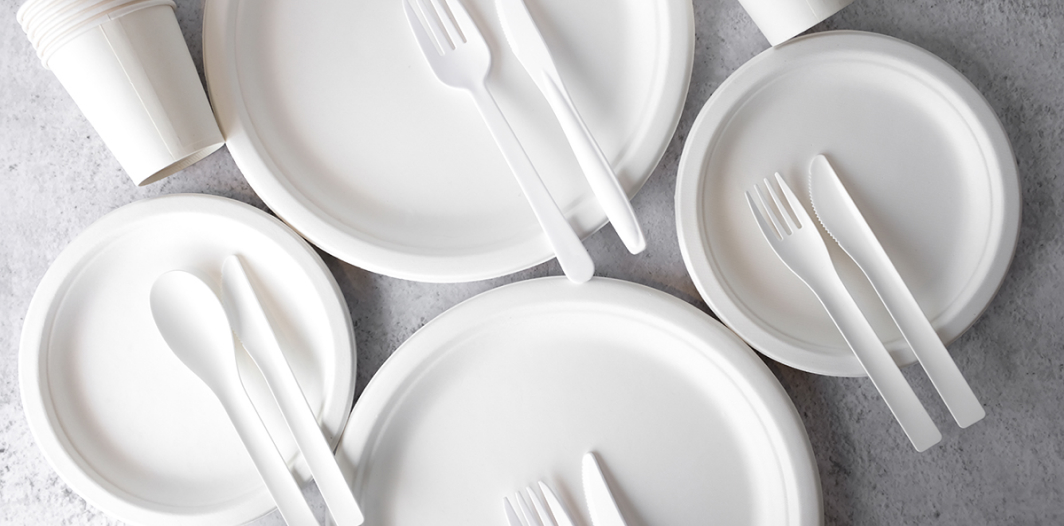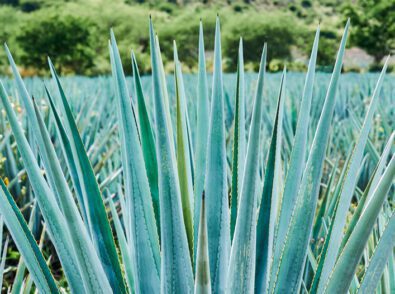Is PLA Actually Recyclable?

As an alternative to petroleum-based plastic, PLA is generally considered sustainable and renewable; therefore, it offers many “better than” advantages over traditionally made plastics—as long as it’s disposed of properly, either through a recycling program or in a commercial composting facility.
Although PLA is recyclable in a general sense, it is better suited to commercial composting, under which conditions it will break down in approximately 12 weeks.
Today, let’s talk about PLA: What is it? Is it recyclable? And what are the best ways to dispose of it? Read on to learn more.
What is PLA?
Polylactic acid (PLA) is a type of bioplastic manufactured using plant-based starches as a base material. Corn, sugarcane, agave, cassava, or sugar beets form the feedstock base.
The chemical process used to make PLA transforms the fermented feedstock into lactic acid, which produces a filament that can then be made into products using an extrusion process.
Examples of PLA products we see in everyday use include plastic bottles, hot and cold cups and lids, shrink wrap, food wrap, 3D printed products, takeaway containers, straws, cutlery and utensils, plates and bowls, and medical devices.
PLA Pros
- PLA is compostable when disposed of properly.
- It can be recycled without downgrading its quality.
- Manufacturing PLA is more environmentally friendly.
- Carbon emissions from manufacturing PLA are 80% lower than traditional plastics.
- Compostable through industrial composting programs.
- When incinerated, PLA emits less toxicity than petroleum-based plastics.
PLA Cons
- Lacks recycling infrastructure. This is a big one.
- Cannot be recycled with other plastics.
- Often processed with PP or PET, which degrades the quality of the recycled result.
- PLA products are currently more expensive than alternatives.
- Most PLA ends up in landfills where it does not break down for a long time.
- Not suitable for durable use as PLA is more permeable than other plastics.
- When composted, PLA does not provide any significant nutrients to the result.
Is PLA Plastic Recyclable?
Though PLA is technically recyclable, most plastic, PLA included, never make it into a recycling program.
Statistically, only 5-6% of recyclable plastics are actually recycled. Most of it ends up in a landfill, which doesn’t have the biological or thermal capacity to break down bioplastics.
Another issue is that PLA is indistinguishable from PP at the recycling plant, which can present a problem. Though PLA has been used widely and more frequently in recent years, most recycling programs lack the infrastructure to process it effectively. Plus, it closely resembles other recyclable plastics, like PET and PP, so it isn’t often sorted out as it should be.
One of the most concerning issues regarding recycling PLA is that it has a lower melt temperature than other plastics and requires specialized handling. When handled correctly, PLA can be ground up and made into new materials and products when recycled. But when mixed with PP or PET and melted together, it reduces the strength, quality, and value of the result making it unviable.
Similarly, recycling PLA on its own into new filaments reduces the tensile strength of the original.
Material recovery facilities (MRFs) are a type of recycling plant that separates materials for resale to end buyers, usually manufacturers, that make products or process materials out of recycled stock. Some will sort out materials that have been improperly sorted going into curbside programs, but not all do.
PLA collection programs are currently quite limited. Because of that, PLA does not meet the Association of Plastic Recyclers’ definition of “recyclable.” Growth in this area is expected, but composting is still the most viable option for disposal.
If you use and dispose of a lot of PLA, such as you might if you were a restaurant or food service company, it wouldn’t be a bad idea to reach out to your local MRF to see if they sort out PLA. If they have the capacity to do this, it gives you an additional end-of-life option for single-use PLA products.
Considering these points, we can conclude that recycling PLA, while possible, is not the best way to dispose of this bioplastic.
How to Dispose of PLA
The best way to dispose of PLA is through an industrial composting facility. For homeowners, this means throwing out your PLA items in your curbside green bin, not the blue recycling bin.
PLA is considered “conditionally compostable,” which means that as long as the items end up in the right place (an industrial composting facility), they will break down relatively quickly. Left in the open, disposed of in landfills, or discarded with other recyclable plastic, PLA can potentially cause the same issues as any other plastic.
PLA does not biodegrade in the earth or ocean. If the world switched to PLA drinking straws tomorrow and continued throwing them away as they do plastic straws, we would not be better off. The only answer is to be aware of the products you choose and set up systems and infrastructure to deal with them properly when they’ve come to the end of their useful life.
Even with the best intentions, we can assume that some PLA will end up where it shouldn’t be. The onus is on us, the end-users, to ensure we know what materials we accept from restaurants, grocery stores, and other retail sources. We can then dispose of PLA in a way that doesn’t compromise the spirit in which the products were created.
Many PLA claims are seen as “greenwashing” because of disposal complexities. In other words, it’s easy to convince people that PLA is a good thing. But when manufacturers or users of PLA products fail to disclose disposal protocols, they are not much better than the products they are meant to replace.
In conclusion, PLA has clear advantages over petroleum-derived plastics. But until there is a better public understanding of what it is and how to dispose of it, we still have some work to do.
As a material, PLA is recyclable and compostable. However, there is currently no waste infrastructure to handle PLA recycling. We must also keep in mind that compostable doesn’t mean biodegradable. Until there are clear pathways to recycling bioplastics like PLA, we must remain steadfast in our commitment to reducing harm in every way possible.
References
- https://www.sciencedirect.com/science/article/abs/pii/S0959652621017029
- https://www.monofilamentdirect.com/how-long-does-pla-last/
- https://3dsolved.com/is-pla-recyclable/
- https://www.natureworksllc.com/What-is-Ingeo/Why-it-Matters
- https://bioplasticsnews.com/2020/06/09/polylactic-acid-pla-dis-advantages/
- https://phys.org/news/2022-05-plastic-recycled.html
- https://www.liebertpub.com/doi/10.1089/3dp.2016.0054
- https://www.rubicon.com/blog/materials-recovery-facility/
- https://plasticsrecycling.org/pla-design-guidance
- https://www.greenbiz.com/article/are-bioplastics-really-better-environment-read-fine-print



